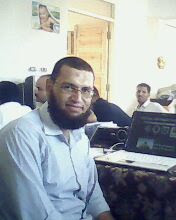I am a kindergarten through fifth grade science specialist. I see about six classes
each day at 40 minutes each. I work with each grade level, helping teach the
science curriculum. The students tend to do more hands-on, experiential science
in the lab with me. I help the students use science notebooks and also provide
training to the regular classroom teachers on how to do the science notebook.
I have also worked with grade levels on their science curriculum. I meet with
them and work on how we can fit the science content into the projects that they do
at the end of the quarter. I have also planned science-themed field trips for som e
grades. I help maintain the school nature trail (which the students often use with
me) and organize one or two Saturdays during the year when parents come and
help clean the trail. Along with the nature trail, I work with the second grade on
planting a community vegetable garden.
I also coordinate all the science kits that the regular teachers use in their
classroom to teach science. This means that I order replacement parts and
obtain animals that are needed to teach the kit.
Best and Worst Parts
The best part of the job is working with the students helping them discover the
natural world: helping a kindergarten group, for example, to recognize a cardinal
or a robin by their song.
The worst part of the job is having to track down teachers who have not turned in
information or have not completed a task.
Tips
I would advise anyone going into teaching to spend as much time in a classroom
beforehand as they can. I would even suggest that you become a teacher's
assistant for a year before deciding to go into this field. This will give you a real
glim pse into teaching. I would also suggest sticking it out for at least four years.
After your fourth year of teaching, it gets so much easier. You know how to read
the students better, you have learned to tweak lessons.
